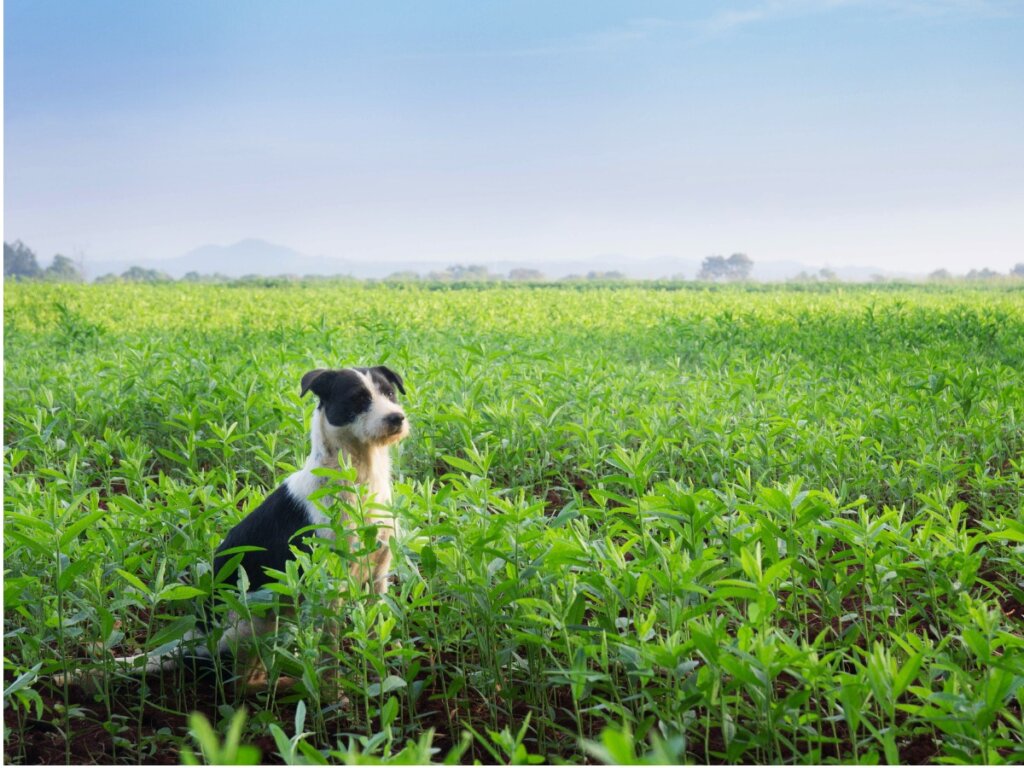Mucuchies Dogs: Everything About this Breed

Also known as “dogs of the páramos“, the Mucuchies dogs come from a small town in the Venezuelan state of Mérida, known for its windy landscapes and snow-capped mountains. Due to its cultural and heritage importance, this dog has been considered the national dog of Venezuela since 1964.
Mucuchí dogs are loyal, brave, loving and gentle shepherds. Their historical importance to the region made them an attractive breed to South Americans. In this article, you’ll learn more about the only breed of dogs native to Venezuela.
Origin and history of the Mucuchí dogs
The Mucuchíes is a breed native to Venezuela and it’s believed that it comes from the cross between the dogs introduced in this region by the Spanish conquerors. Their possible ascendants are the Spanish Mastiff, the Pyrenean Mastiff, the Algerian Mastiff, the Atlas Sheepdog, and the Great Pyrenees.
It’s a very important animal in Venezuelan history, as Simón Bolívar adopted a dog of this breed (called Nevado) when he arrived in the Venezuelan Andes during his fight for independence. The dog accompanied him on his travels and battles until he died in the Battle of Carabobo on July 24, 1821, which certified the independence of Venezuela.
The name of the breed comes from the Andean population in which Bolívar met Nevado.
In 1926, Mucuchies dogs could be found throughout Venezuela. After this wide territorial expansion, their race and purity had a serious decline in the following decades. In 1961, a club (which no longer exists today) was created in order to conserve this type of canid and, in 1964, it was declared the national dog of Venezuela.
In 2008, the Ministry of Popular Power for Tourism created the Nevado Foundation with the purpose of preserving the national canine breed in danger of extinction. In 2013, under the presidency of Nicolás Maduro, this organization was transformed into Misión Nevado, thus adopting a more generic, animalistic dye that promotes the adoption of abandoned animals.
Physical characteristics
Mucuchies dogs can measure between 56 and 71 centimeters (22 – 28 inches) in length and weigh between 30 and 50 kilograms (66 – 110 pounds), depending on whether they’re male or female. This makes them large, robust and imposing animals, like any mountain dog. Some tutors even compare it to the Saint Bernard dog.
Its color can be completely white, white with spots of different shades, or honey and white with black spots. Professional sources affirm that, due to the climatic conditions of the Venezuelan Andes, these dogs have abundant straight or slightly wavy fur.
Mucuchíes dog character
These dogs are agile and wide-paced and have a watchful instinct that keeps them alert at all times. They are also affectionate, sociable, intelligent and very active. In their origins, they shepherded flocks and were guard dogs. For this reason, they’re usually meek, defenders and faithful, but at the same time they’re distrustful of strangers.
Due to their character, it’s important for these dogs to go running every day. In addition, it’s recommended that, if possible, they have a large area where they can run and play for at least 45 minutes or 1 hour per day.
Care and health
Mucuchi dogs prefer cold climates and it isn’t recommended for them to live in an apartment. Dog Breed Info says that these dogs need space and, although they aren’t very active indoors, they do require regular exercise outdoors.
This breed is a great seasonal shedder and its coat is easy to maintain using a firm bristle brush. While its protective coat is thick, its hair is also quite short and only requires brushing once or twice a week to keep it free of dirt and tangles.
These dogs only require bathing a few times a year, as overly frequent baths can strip the layer of natural oils and reduce their resistance to extreme weather conditions, experts say. In addition, the hanging ears of this dog should also be checked regularly, as, in this way, the guardian can ensure that they’re free of moisture and dirt to avoid infections.
As for their physical activity, as these are fairly large dogs, it’s essential for the health of their bones and joints to be cautious and not cause undue stress on the legs and hips while their bones are still growing. This means that you shouldn’t overexert the dog, no matter how much it needs physical activity.
It’s very important to be careful about this, especially during the dog’s infancy, as activities such as running vigorously, jumping on high surfaces, and standing on its hind legs for long periods can cause the inadequate formation of the animal’s skeletal system. If you have any questions about its development, consult a veterinarian.
Education of mucuchies dogs
While they’re good with children, Mucuchies can become overprotective of them. This is especially the case if not enough attention is paid to their socialization training while the dog is growing.
Although they’re naturally very intelligent, Mucuchies have a tendency to get bored and impatient with repetitive or overly long training sessions. For this reason, they respond best to short training sessions made up of a variety of activities.
This breed has an exciting story to tell, as it’s the living symbol of latter-day Venezuela. Apart from this, it’s an attentive, helpful, and beautiful dog. It has it all!
All cited sources were thoroughly reviewed by our team to ensure their quality, reliability, currency, and validity. The bibliography of this article was considered reliable and of academic or scientific accuracy.
Alba Ciudad. (2018, 7 noviembre). Épica, identidad y ternura tras la historia del perro Mucuchíes [Comunicado de prensa]. https://albaciudad.org/2018/11/epica-identidad-y-ternura-tras-la-historia-del-perro-mucuchies/
Dog Breed Info. (s. f.). Mucuchies Dog Breed Information and Pictures. Recuperado 26 de julio de 2021, de https://www.dogbreedinfo.com/mucuchies.htm
Mascotarios. (2012, 11 abril). Mucuchíes. Mascotas. https://www.mascotarios.org/mucuchies/
Sebring, P. (2018, 1 junio). Mucuchies. WagWalking. https://wagwalking.com/breed/mucuchies
Yánez, A. (2019, 1 septiembre). Mucuchíes: 55 años como perro nacional [Comunicado de prensa]. https://ultimasnoticias.com.ve/noticias/tu-mascota/mucuchies-55-anos-como-perro-nacional/
